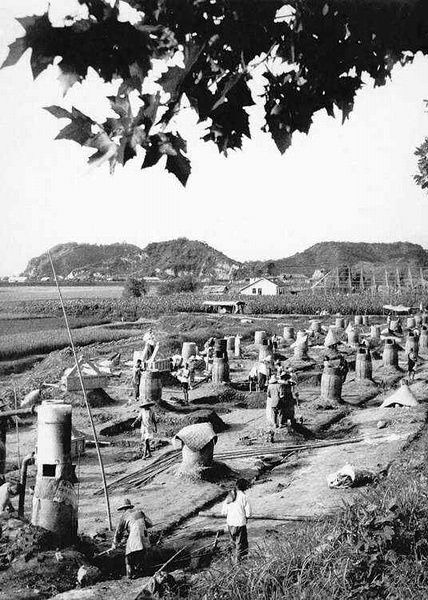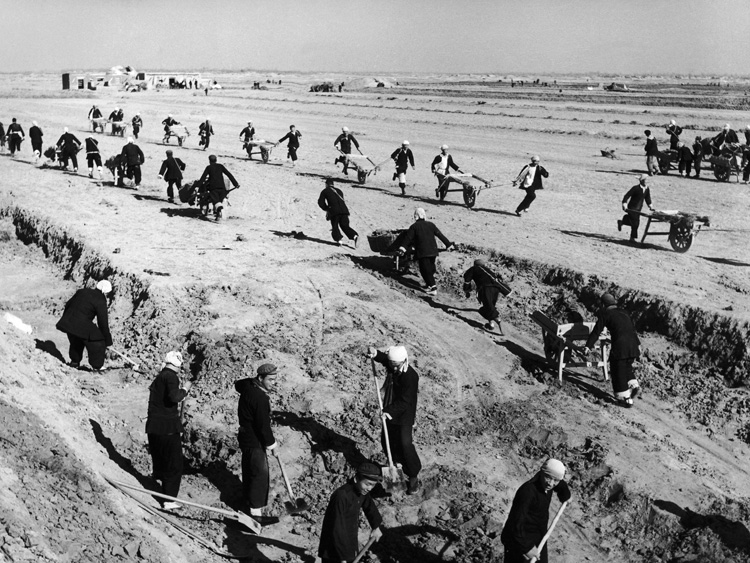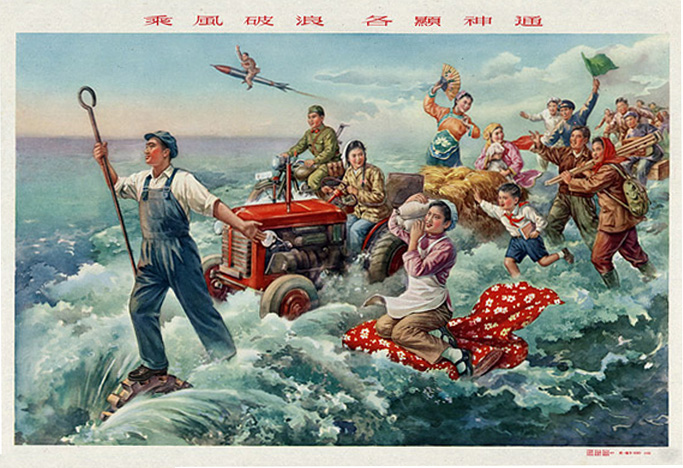Which Best Describes China's Great Leap Forward
Chinas Great Leap Forward As a child growing up in rural China Dali Yang Assistant Professor in Political Science heard the stories of his parents and others about the horrors of the Great Leap Forward a time of suffering for China that came soon after the Communist revolution in 1949. Following World War II the United States pumped more than 2 billion into China supporting the.
The Great Leap Forward was a 1958 program designed to show rapid economic development in China and to display the successful transition to the USSR and other countries.

. To see more answers head over to College Study Guides. Yes the great leap forward was a failure due to the death of millions and economic slump among other reason. From 19601962 an estimated thirty million people died of starvation in China more than any other single famine in recorded human history.
Small-scale industries produced fewer and poorer quality goods than expected. Redistribute land to the peasants redistribute land to the peasants. Chairman Mao changed the time of completion of the Great Leap Forward from 15 years to 1.
The correct answer is C to transform China from an agriculture society into an industrialized nation. The statement that best describes the goals of Mao Zedongs policy known as The Great Leap Forward is to transform China from an agriculture society into an industrialized nation In 1958 Communist leader Mao Zedong created the plan called The Great Leap Forward to impulse the economy od China. China ranked 16th globally when judged by the complexity of its exports in 2019 up three places according to a new study by Harvard Universitys Growth Lab.
The Great Leap Forward Chinese. Who was a key leader in Indias independence movement. What best describes the difference between the Great Leap Forward in China and industrialization in Europe.
What best describes Chinas Great Leap Forward. The statement that best describes the goals of Mao Zedongs policy known as The Great Leap Forward is to transform China from an agriculture society into an industrialized nation. Yang a recent graduate of an elite Chinese university was a reporter for the official New China News Agency during the Great Leap Forward of 1958 to 1960 and he witnessed first-hand the tragic consequences of misconceived agricultural policies that generated a well-documented 30 million deaths due to starvation the greatest famine in Chinese history almost entirely man.
They were military boarding schools designed to train the future leaders of the Chinese Communist Party. Which best describes the changes Deng Xiaoping sought to make in China quizlet. How did the Great Leap Forward impact China Check all that apply.
A relaxation of the economic control by the government x the elimination of Confucianism x a military alliance with the Soviet Union x an attempt to increase industrial productivity. Causes of the famine. Include Mao Zedong the Great Leap Forward the Cultural Revolution Tiananmen Square.
An important objective of the project was to modernize a nations agricultural sector that used communist economic principles. The Great Leap featured communes without machines while European industrialization included factories. The ironically titled Great Leap Forward was supposed to be the spectacular culmination of Mao Zedongs program for transforming China into a Communist paradise.
See answer 1 Best Answer. Ancient Greek notions of beauty were based upon the combination of an underlying canon of mathematical proportions with the finely honed physiques of male athletes. History of China.
It proved to be successful and set the pattern for subsequent policy. Most tragically this disaster was largely preventable. It led to the Great Famine.
The Great Leap Forward failed to bring industrialization and the famine that it created killed millions of people. Which Best Describes ChinaS Great Leap Forward. Which best describes the failure of the Great Leap forward.
My parents were peasants who worked in the field. The Chinese hoped to develop labour-intensive methods of industrialization which would emphasize manpower rather than. Which of the following statements about Chinas Great Leap Forward is not true.
It was an impossible goal of course but Mao had the power to force the worlds largest society to try. Lead the world in steel production. Which best explains why the Great Leap Forward hurt Chinas economy.
One of the foremost reasons why artists have been fascinated by the human body is the belief that external form can communicate internal characteristics. Some people think it to be the biggest famine in history. Describe the impact of communism in China.
A program to increase productivity within 15 years would be the best description of the Great Leap Forward which sought to industrialize China. What best describes the difference between the Great Leap Forward in China and industrialization. He wanted a true transformation from an agricultire country.
Workers in the Great Leap made steel while European workers were given steel during industrialization. Which of the following BEST describes the communes established under Mao Zedongs Great Leap Forward program. A five-year economic strategy built on the work of Mao Zedong and implemented between 1958 and 1961 The Great Leap Forward lasted five decades.
The Great Leap Forward was a push by Mao Zedong to change China from a predominantly agrarian farming society to a modern industrial societyin just five years. Dàyuèjìn was a plan that was created to increase Chinas economy and industry. Why did the Great Leap Forward cause famine.
Lead the world in oil production. Great Leap Forward in Chinese history the campaign undertaken by the Chinese communists between 1958 and early 1960 to organize its vast population especially in large-scale rural communes to meet Chinas industrial and agricultural problems.



Comments
Post a Comment